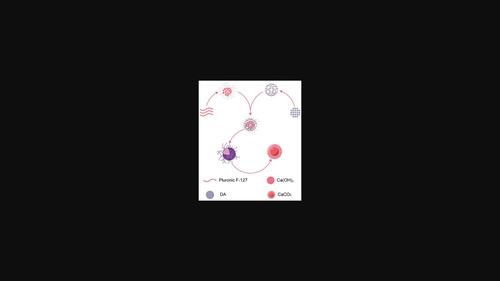当前位置:
X-MOL 学术
›
Part. Part. Syst. Charact.
›
论文详情
Our official English website, www.x-mol.net, welcomes your feedback! (Note: you will need to create a separate account there.)
Nano‐Calcium Carbonate with Core–Shell Structure was Prepared by Dopamine Chelation Using Pluronic F‐127 as Template
Particle & Particle Systems Characterization ( IF 2.7 ) Pub Date : 2024-02-26 , DOI: 10.1002/ppsc.202300199 Weihan Shu 1 , Jiang Gong 1 , Hanqing Zhang 1 , Fengling Zheng 1 , Juan Zeng 1 , Xue Wang 1 , Siqian Qin 1 , Chuancai Zhang 1 , Haodong Xue 1 , Bin Dai 1
Particle & Particle Systems Characterization ( IF 2.7 ) Pub Date : 2024-02-26 , DOI: 10.1002/ppsc.202300199 Weihan Shu 1 , Jiang Gong 1 , Hanqing Zhang 1 , Fengling Zheng 1 , Juan Zeng 1 , Xue Wang 1 , Siqian Qin 1 , Chuancai Zhang 1 , Haodong Xue 1 , Bin Dai 1
Affiliation

|
Herein, a new template carbonization method is used to prepare calcite‐type nano‐calcium carbonate (CaCO3 ) with a core–shell structure using calcium hydroxide as a solute and Pluronic F‐127 as a templating and pore‐forming agent. Dopamine hydrochloride is added to control the size of calcium hydroxide particles. The morphology, particle size, and crystal type of CaCO3 are characterized via transmission electron microscopy, X‐ray diffraction, nanoparticle size, and zeta potentiometer. The creation of core–shell calcium carbonate nanoparticles is examined in relation to reaction circumstances (i.e., additive sequence, additive amount, and additive mixing time), carbonization temperature, liquid flow rate, and templates with varying chain lengths. Furthermore, a discussion is held regarding the formation mechanism of spherical core–shell calcium carbonate that is created using the innovative template carbonization method. The results show that the order, amount, liquid flow rate, and template type of additives have a significant effect on the crystal shape of calcium carbonate nanoparticles. The mixing time of additives has a significant effect on the particle size of calcium carbonate nanoparticles. Interestingly, the thickness of the shell depends on the carbonization temperature, and too slow or too fast flow rate will lead to the formation of cyclic calcium carbonate nanoparticles.
中文翻译:

以Pluronic F-127为模板通过多巴胺螯合制备核壳结构纳米碳酸钙
本文采用一种新的模板碳化方法制备方解石型纳米碳酸钙(CaCO3 )具有核壳结构,使用氢氧化钙作为溶质,使用 Pluronic F-127 作为模板剂和成孔剂。添加盐酸多巴胺以控制氢氧化钙颗粒的尺寸。CaCO 的形貌、粒径和晶体类型3 通过透射电子显微镜、X 射线衍射、纳米颗粒尺寸和 zeta 电位计进行表征。研究了核壳碳酸钙纳米颗粒的生成与反应条件(即添加顺序、添加量和添加剂混合时间)、碳化温度、液体流速和不同链长的模板的关系。此外,还讨论了使用创新模板碳化方法制备的球形核壳碳酸钙的形成机制。结果表明,添加剂的顺序、用量、液体流速和模板类型对碳酸钙纳米颗粒的晶形有显着影响。添加剂的混合时间对纳米碳酸钙的粒径有显着影响。有趣的是,壳的厚度取决于碳化温度,太慢或太快的流速都会导致环状碳酸钙纳米颗粒的形成。
更新日期:2024-02-26
中文翻译:

以Pluronic F-127为模板通过多巴胺螯合制备核壳结构纳米碳酸钙
本文采用一种新的模板碳化方法制备方解石型纳米碳酸钙(CaCO



























 京公网安备 11010802027423号
京公网安备 11010802027423号